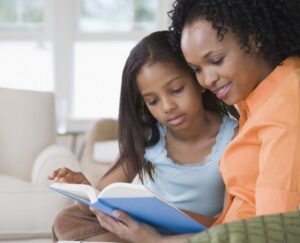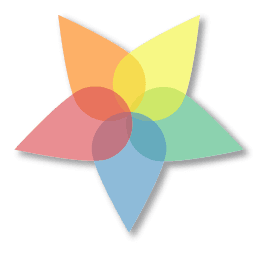Homeschoolers have the luxury of learning to read at their own pace. Each child learns in their own time and in their own way. As a parent, you may wonder how this magical process will unfold.
Will you need to work hard at it?
Will you wake up one day and find your child reading the encyclopedia?
It can be hard to tell but most children follow one of 3 patterns. Interestingly, I had one of each of these readers. So I can give you insight into what to expect from each one.
Type 1 — The Typical Reader
 The typical child sits in your lap while you read to them during the preschool years. You read some alphabet books and sing your ABCs. Your child starts to pick up on the concept of letters.
The typical child sits in your lap while you read to them during the preschool years. You read some alphabet books and sing your ABCs. Your child starts to pick up on the concept of letters.
During the kindergarten years, this child learns to recognize their own name and easily learns each letter’s name or sound. They begin to read small words and things like stop signs. Parents get excited and give the child a learn-to-read app, computer game or toy.
In first grade, the child starts reading early readers. Without ever having much formal reading instruction, this child slowly builds reading skills as parents supply them with plenty of easy readers, Cat in the Hat and Bob books.
This is the way that most homeschool parents describe reading happening for their child. It seems rather magical, with very few parent-led lessons.
Parents keep reading to the child from chapter books and more difficult texts. And by age 8 or 9 the child starts reading early chapter books on their own.
This child is on par with almost all other children their age, no matter which path to reading they took.
Type 2 —The Early Reader
 This child shocked the stuff out of mom and dad by reading a sentence that was FAR above their age or grade level early in life. This child spontaneously started reading, possibly without learning either phonics or sight words in the traditional ways.
This child shocked the stuff out of mom and dad by reading a sentence that was FAR above their age or grade level early in life. This child spontaneously started reading, possibly without learning either phonics or sight words in the traditional ways.
Most of these children are sight readers who memorize every word after very little exposure. This child may or may not read much to themselves though. Children who spontaneously read early may do so only to play their favorite video games. Some are keeping up with an older sibling. Some are passionate about learning more about something that interests them. These children are sometimes have hyperlexia, a condition that goes beyond just early reading.
These children may still need to be pushed to read out loud to parents from early readers. They will need to learn how to pronounce unusual words they find in the text. These children also may struggle with spelling as they get older. They may need to learn phonics for spelling since they did not learn it for reading.
These children are often not interested in chapter books until age 8 or 9, even though they can read all the words well before then.
Don’t worry, this is normal. Most children cannot picture a story in their minds while reading before this age and still need pictures to help them grasp the story.
Parents of an Early Reader should continue to read to their child from picture books, chapter books, and more difficult texts. When your child is 8 or 9, start working on a phonics-based spelling program if your child shows signs of struggling with spelling.
Type 3 — The Late Reader
 This child shows a lack of interest in letters and books in the preschool years. Despite going over and over it they struggle to learn their letters in the kindergarten years. They may even have trouble with the ABCs song, leaving out letters or mixing up whole sections. They have trouble recognizing their own name out of context. This child may also have trouble playing word games like making up rhymes or saying words that start with the same sound.
This child shows a lack of interest in letters and books in the preschool years. Despite going over and over it they struggle to learn their letters in the kindergarten years. They may even have trouble with the ABCs song, leaving out letters or mixing up whole sections. They have trouble recognizing their own name out of context. This child may also have trouble playing word games like making up rhymes or saying words that start with the same sound.
For this child, it is important to slowly lay the groundwork at ages 6 and 7 in learning every letter. Spend time on both upper- and lower-case forms and play lots of word and sound games. Only after they can recognize every letter, start to slowly teach phonics. Because I have a child like this, I developed our program called Foundations and Fundamentals to help teach kids learn their letters in a multisensory way. It teaches the formation of the letters and their phonics together to make the lessons more tactile, which can really help kids who are struggling.
At age 7 or 8 this child may be ready to start a program that teaches reading in a logical phonics-based way. All About Reading is one example of this kind of program.
It is important for these children to use an Orton-Gillingham approach. This approach is a structured, multi-sensory method of teaching the basics of word formation based on scientific research on childhood brain development.
Some children who struggle with learning to read may also benefit from vision therapy. Some struggles with reading may be related to eye strain or general weakness in the eye muscles. Vision Therapy helps develop the skills needed for reading through games and activities.
The majority of these children catch up to their peers after a year or two of reading practice.
If your child still struggles after you work with them in an Orton-Gillingham program, you may need to see a reading specialist for more help.
You can’t rush reading
No matter which path your child is on, reading is a skill your child will develop when their brain and eyes are ready.
If you want to know more about learning to read, check my blog post on the 10 Signs of Reading Readiness.





0 Comments